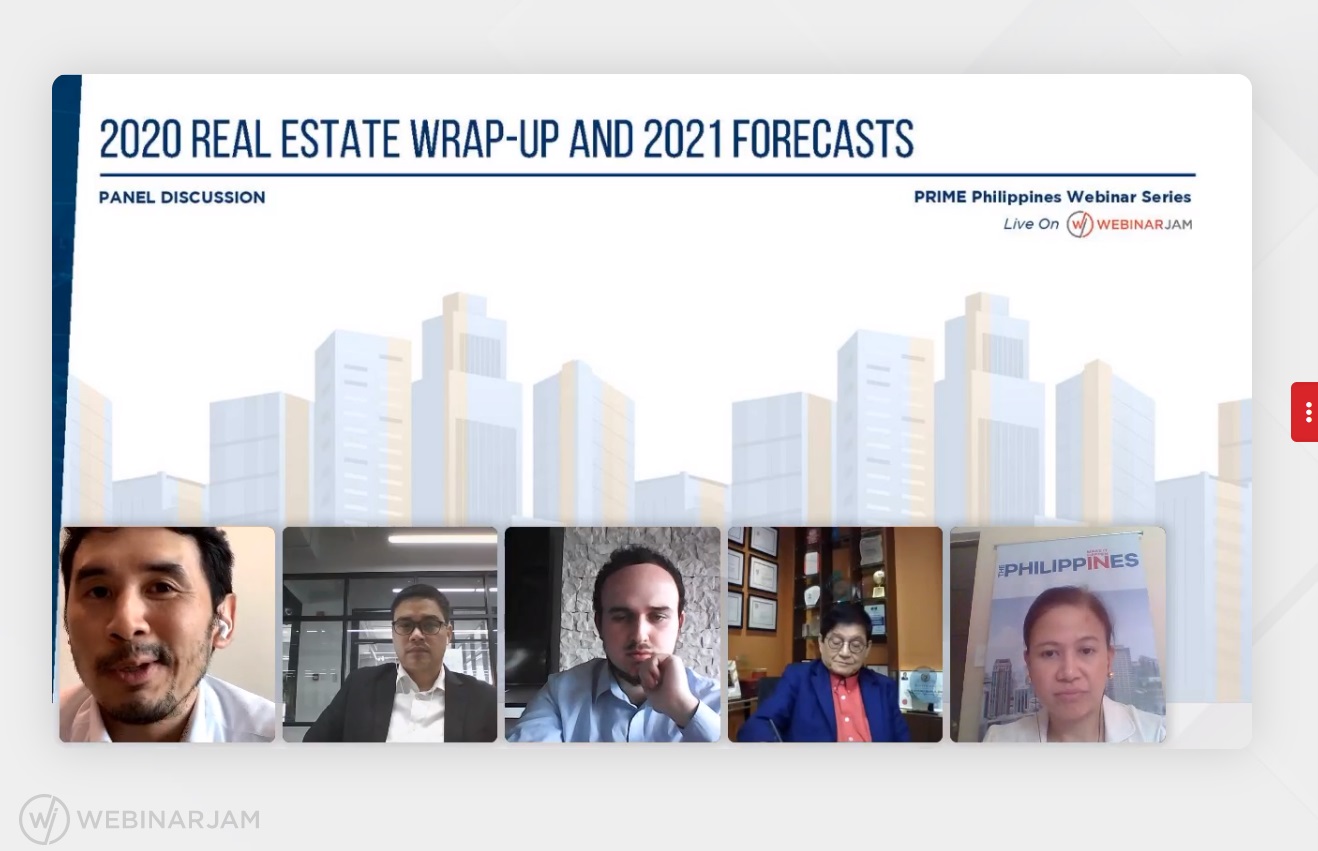
The impending implementation of the Corporate Recovery and Tax Incentives for Enterprises (CREATE) Act and the sectors led by construction and infrastructure will have the biggest impact on the road to economic recovery for the Philippines this year. This was bared by the Board of Investments (BOI) during the online PRIME Radar: Real Estate Wrap-up and 2021 Forecasts Webinar recently (February 11, 2021).
“The CREATE Act, once signed by the President after being ratified by Congress is expected to boost market and investors’ confidence through the rationalization of incentives to respond to the changing needs of businesses. The government will continue to implement strategic policy reforms and propose similar measures to make it easier to do business and encourage the flow of more foreign direct investments (FDIs) into the country,” BOI Officer-in-Charge for International Investment Promotion Lanie Dormiendo said, echoing the earlier statement of Trade Secretary and BOI Chairman Ramon Lopez, that the CREATE Act will unleash the growth potential of investments and estimates point to bringing in an additional Php200 billion in new investments that can generate up to two million in new jobs.
The CREATE Act lowers the Philippines’ corporate income tax (CIT) rate from 30 percent to 25 percent and modernizes the country’s investment incentives, making them more competitive and transparent, time-bound, targeted, and performance-based. It also provides businesses with economic stimulus measures that will help them recover from the coronavirus pandemic. Congress recently ratified the measure and is now with Philippine President Rodrigo Duterte for consideration and approval.
The Philippines’ FDIs remained steadfast for 2020, despite the global crisis brought by the pandemic, as preliminary estimates of the United Nation Conference on Trade and Development (UNCTAD) showed a 29 percent increase of foreign investments to US$6.4 billion, from US$5 billion in 2019, in stark contrast with the decline of global FDIs. The Philippines is among the very few countries which experienced an increase in FDIs
Dormiendo pointed out that the Agency was able to achieve its Php1 trillion (US$19 billion) target in project approvals with a total of approved investments of US$20.55 billion (P1.02 trillion) for 2020 and although this was slightly lower than the record figure in 2019 (P1.14 trillion), it is still the second-highest level of project approvals in BOI’s history considering the restraints brought about by the pandemic. In 2021, Secretary Lopez announced a US$25.19 billion (P1.25 trillion) project approval target for the agency.
BOI figures for 2020 show that construction/infrastructure is the sector with the highest approved investments (P557.3 billion or 56percent), followed by electricity, gas, steam, and air conditioning supply (Php199.2 billion or 20percent), transportation, and storage (P161.6 billion or 16percent), real estate (P32.54 billion or 3.3percent), and the water supply, sewerage, waste management and remediation (P27 billion or 2.7percent). These projects once fully operational are expected to power the country towards economic recovery for 2021 and beyond.
She added that other policy reforms are being pursued by the government such as the Retail Trade Liberalization Act which will lower the threshold requirement which is currently at USD 2.5 million; Public Services Act which will allow full foreign investments in public utilities outside those covered by power transmission and distribution and waterworks and sewerage systems as well as in telecommunications; and the Foreign Investments Act which proposes to reduce the minimum direct employees to 15 from 50 with minimum paid-in capital of US$100,000 and will also create an Investment Promotions Council to institutionalize the whole-of-government approach and provide a platform to consolidate initiatives of various investment promotion agencies (IPAs) and other relevant agencies.
ING Bank Senior Economist Nicholas Mapa, in a presentation, said that the country’s GDP growth for 2020 could go as high as 13 percent or as low as 4 percent (with ING projecting 4.7 percent at low-end) and everything depends on the stimulus measures, vaccine roll-out and the pace of household consumption demand.
Architect Jun Palafox of Palafox and Associates highlighted the use of green urbanism in several of his existing projects like Clark Aerotropolis, Pampanga Megalopis, and Metro Davao as new urban growth centers to decongest the National Capital Region. Green urbanism emphasizes walkability, bikeability, and easier access to public transport in these areas. He said that by adopting this standard, communities, and cities can enhance traffic safety, promote efficient movement for all modes of transport, and support environmental sustainability.
Cholo Florencio, VP of PRIME, in its 2020 report and 2021 outlook stated that 2021 will be the year of decentralization with the implementation of the hub and spoke model as the office sector continues to expand along with the emergence of horizontal housing in the provinces and cities will sustain demand and sales performance. He also said that raw and land acquisition in provinces will increase in 2021.
The PRIME report noted that demand for warehouses was boosted by the e-commerce boom in 2020. Logistics companies comprised nearly 90 percent of urgent industrial demand. Investors are already considering diversifying into industrial development as the sector remains resilient amidst the pandemic.
“The residential sector was mostly undeterred by the pandemic in 2020 as 92 percent of developers recorded improved or similar sales compared to 2019. These developers remain bullish for 2021 as they continue to plan new projects or source new properties to acquire for development. The retail sector is expected to proceed with caution as select brands had issues maintaining sales and operations within existing locations. Unless malls reopen and relax restrictions, brands are likely to decrease their expansion targets due to low-foot traffic and consumer spending,” the report said.
Meanwhile, PRIME explained that outsourcing companies have set their sights on various provinces outside of Metro Manila for their 2021 expansion with the growing interest in Clark, Pampanga as an alternative Metro and due to its infrastructure and population. Other possible areas of expansion are mostly provinces near Metro Manila, as firms look to bring work nearer to the home of their employees. It also added that the recovery of the tourism sector will be propelled by local tourism especially outside of MM in key tourism areas.
—
Stay updated with news and information from the Board of Investments by visiting their website at https://boi.gov.ph.







